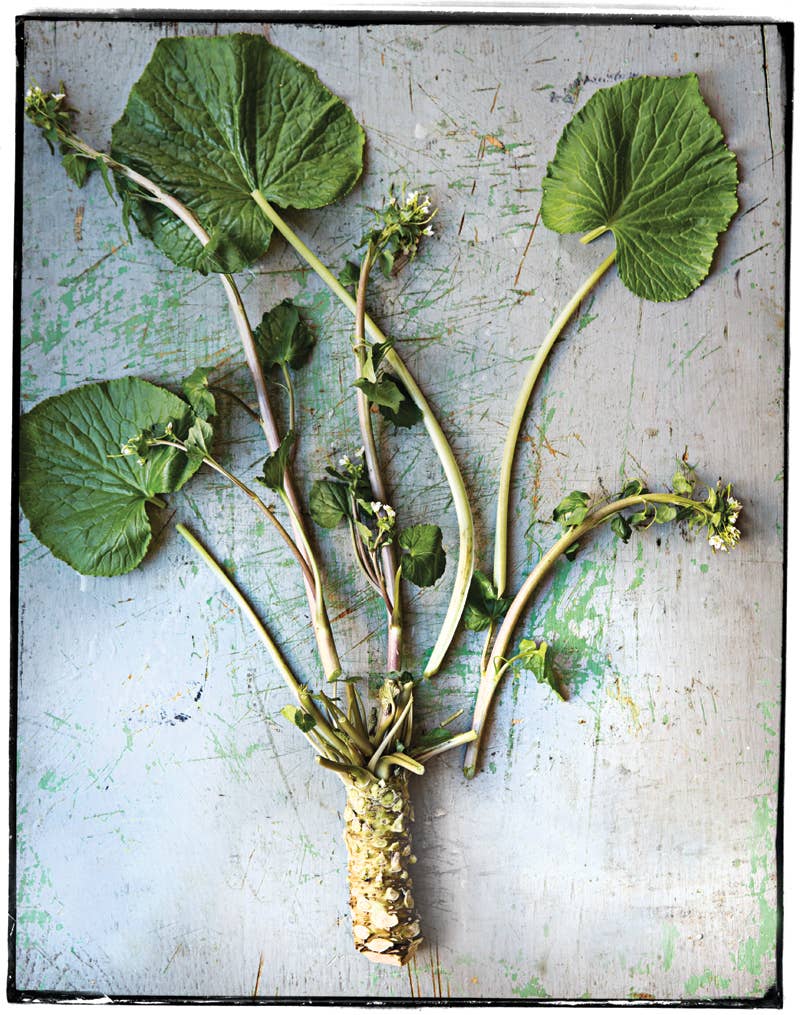
Looking down at the spicy paste that came with my sushi takeout, I marvel that I spent most of my life thinking this mixture of horseradish and green food coloring was wasabi. I only recently had my first taste of the real thing—a zesty perennial called Wasabia japonica rarely grown outside of Japan—at Markus Mead and Jennifer Bloeser's Oregon coast farm. In 2010, the couple reached out to an acquaintance, the Canadian aquaculturist and wasabi expert Dr. Brian Oates, to ask if horseradish's finicky cousin could grow in the garden of their newly purchased home. He told them that not only would it grow, but it would thrive on their shaded plot near the sea. So, with Oates as a consultant, they launched Frog Eyes Wasabi and began planting the water-loving cultivars—Daruma and pink-hued Mazuma—in flooded gravel beds. The result is a phenomenal fresh ingredient offering an arresting flavor: sizzlingly hot but with palate-cleansing herbaceousness. It's not just the root of the plant that's edible. I've pickled the crisp stems, scattered the flowers over salads to lend fiery verve, and battered and tempura-fried the tender, peppery leaves. As for the fresh rhizome, I grate that with a microplane and whip it into wasabi butter to slather on steaks, add to bloody marys, or sprinkle over grilled salmon for a piquant punch. It's pricey, but a little goes a long way. Best of all, the fresh wasabi beats the heck out of that sushi bar stand-in when I dab it on my take-out nori rolls.
Fresh wasabi root, from $35 per quarter pound (pricing and availability of leaves and stems varies) at thewasabistore.com
Keep Reading
Continue to Next Story










